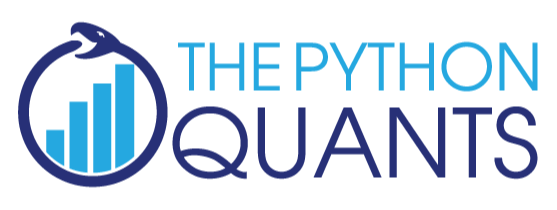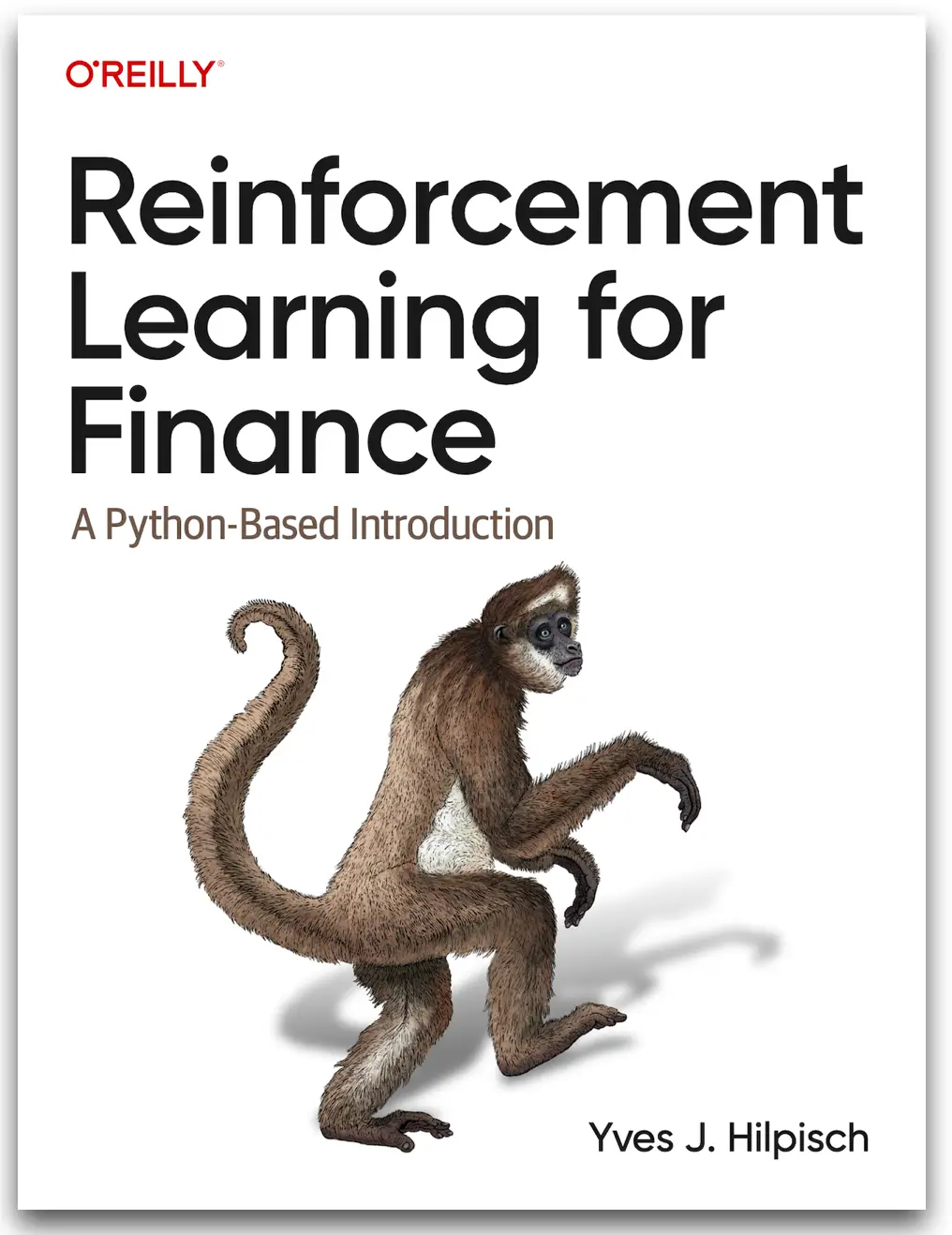Python Books
About Financial Data Science, Artificial Intelligence, Reinforcement Learning, Algorithmic Trading & Quantitative Finance
DR YVES HILPISCH

REINFORCEMENT LEARNING FOR FINANCE
A PYTHON-BASED INTRODUCTION
OUR BRAND NEW BOOK! Reinforcement learning (RL) has led to several breakthroughs in AI. The use of the deep Q-learning (DQL) algorithm alone has helped people develop agents that play arcade games and board games at a superhuman level. More recently, RL, DQL, and similar methods have gained popularity in publications related to financial research. This book is among the first to explore the use of reinforcement learning methods in finance. This book covers: Reinforcement learning, Deep Q-learning, Actor-critic algorithm, Python implementations of these algorithms, How to apply the algorithms to financial problems such as algorithmic trading, dynamic hedging, and dynamic asset allocation.
FINANCIAL THEORY WITH PYTHON
A GENTLE INTRODUCTION
Nowadays, finance, mathematics, and programming
are intrinsically linked. This book provides the relevant foundations of each discipline to give you the major tools you need to get started in the world of computational finance.
Using an approach where mathematical concepts provide
the common background against which financial ideas and programming techniques are learned, this practical guide teaches you the basics of financial economics. Written by
the best-selling author of Python for Finance, Yves Hilpisch, Financial Theory with Python explains financial, mathematical, and Python programming concepts in an integrative manner so that the interdisciplinary concepts reinforce each other.
Python for Algorithmic Trading
From Idea To Cloud Deployment
This book is for students, academics, and practitioners alike who want to apply Python in the fascinating field of algorithmic trading. The book covers the major Python skills to bring your trading ideas from the first formulation to a thorough backtesting and finally an automated, robust deployment in the cloud. As examples, it covers strategies based on technical indicators and based on machine & deep learning based prediction methods. The book has a complete, self-contained set of Jupyter Notebooks and Python code examples.
Artificial Intelligence in Finance
A Python-based Guide
The book covers basic algorithms in AI applied to finance. It covers in-depth data-driven and AI-first finance. The focus in this context lies on the application of neural networks and reinforcement learning to prediction in financial markets. The book also details how to backtest AI-powered algorithmic trading strategies and how to deploy them in automated fashion. Practitioners also find a discussion of AI-based competition in finance as well as of the chances for a financial singularity to happen.
Python for Finance (2nd ed.)
Mastering Data-Driven Finance
This book starts with the basics of Python and covers the most important topics in Python for Finance in a systematic way. It serves both as an introductory text as well as a reference book. Topics covered are data types and structures, NumPy, pandas, object-oriented programming, visualization, financial time series, performance Python, input-output operations, mathematics, stochastics and statistics. In addition, one part of the book covers important topics in algorithmic trading while another one develops an integrated pricing library for options.
Derivatives Analytics with Python
Data Analysis, Models, Simulation, Calibration and Hedging
The central theme of the book is the market-based valuation of plain vanilla and more complex options. It covers from scratch all theoretical elements and numerical approaches needed in this context, such as risk-neutral valuation, complete market models, Fourier pricing, American option pricing by Monte Carlo simulation, stochastic volatility and jump-diffusion models, calibration of pricing models and hedging based on numerical methods. 5,000+ lines of Python codes (Python 3.6) and multiple Jupyter Notebooks accompany the book.
Listed Volatility and Variance Derivatives
A Python-based Guide
Volatility and variance have become important asset classes of their own. This Python-based guide covers the theory and practice of exchange-traded volatility and variance derivatives. The major examples are based on such products based on the EURO STOXX 50 and VSTOXX indices. The book comes with a Jupyter Notebook for each chapter which allows the replication of all results and figures presented.
LEVELING UP
We are offering comprehensive Python & AI for Finance online training programs about Financial Data Science, Natural Language Processing, LLMs & AI Assistants, Algorithmic Trading, Computational Finance, and Asset Management. In addition, we also offer customized corporate training programs. See https://cpf.tpq.io or just get in touch below.
Get & Keep in Touch
DR YVES J HILPISCH
Write me under books@tpq.io. Stay informed about the latest in Open Source for Quant Finance by signing up below. Visit https://linktr.ee/dyjh.

The Experts in Data-Driven and AI-First Finance with Python. We focus on Python and Open Source Technologies for Financial Data Science, Artificial Intelligence, Algorithmic Trading and Computational Finance.







